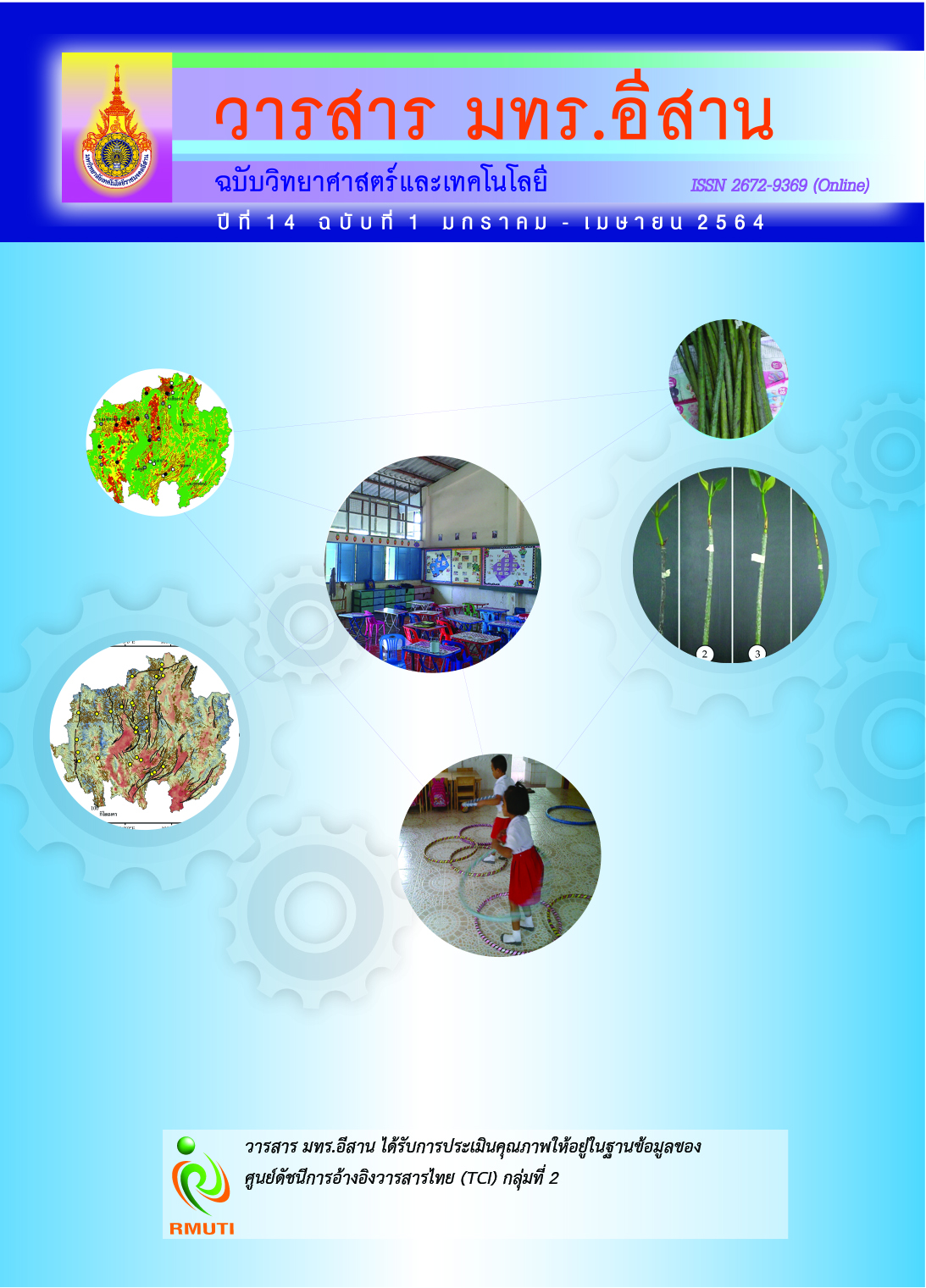Evaluation of the value of Thung Sumrit area utilization for Economic Crops management
Main Article Content
Abstract
The objective of this study is to analyze the use of Tungsamrit area for soil management on growth and the production of economic crops, as well as to assess carbon dioxide emissions and soil organic carbon sequestration for economic crops proceeding in the low suitable area for rice growing (S3), Thung Samrit area at Nakhon Ratchasima Province. The Randomize Complete Block Design (RCBD) experiment was designed with 6 experimental treatments, 4 replications. The results showed that rice and cassava planting affect the chemical properties of the soil. Soil pH was acidic to severe acidic. EC of the soil was evaluated as low to moderate salinity. Quantity of organic matter and nutrients, phosphorus and potassium were in the range of low to very low. Regarding the growth and the production of rice, it was found that chemical fertilizer application according to soil analysis values together with organic fertilizer, gypsum, and bio-extract; the highest yield of rice was 274 kilograms per rai, and the highest cassava yield was 4,680 kilograms per rai. When compared to the control recipe using fertilizer application according to soil analysis values together with gypsum, bio-extract through farmer methods; resulting for the highest organic carbon storage in the soil, equaled to 0.30 percent for rice cultivation and 0.86 percent for cassava plantation. For carbon dioxide emission, both rice and cassava cultivation had similar values which as 559.45 ppm, and 524.83 ppm, respectively which were not statistically different at the 95 percent confidence level. Net income for rice cultivation of all recipe had negative income (a loss), the net income of the control recipe was the lowest as -932.00 baht per rai. Some recipe of cassava cultivation had either positive or negative income.
Article Details
References
Land Development Department. (2011). Thung Samrit Area Map Nakhon Ratchasima Province. Modifi ed from Area 3 Land Development Department, Land Development Department Ministry of Agriculture and Cooperatives.
Jones, P. D. and Briffa, K. R. (1992). Global Surface Air Temperature Variations During the Twentieth Century: Part 1, Spatial, Temporal and Seasonal Details. The Holocene. Vol. 2, Issue 2, pp. 165-179. DOI: 10.1177/095968369200200208
Jobbagy, E. G. and Jackson, R. B. (2000). The Vertical Distribution of Soil Organic Carbon and Its Relation to Climate and Vegetation. Ecological Applications. Vol. 10, Issue 2, pp. 423-436. DOI: 10.2307/2641104
Pabpom, S. (1987). Principles and Methods of Farm Business Management. Bangkok: Odeon Store
Land Development Department. (2004). Manual for Analyzing Soil Samples, Water, Fertilizer, Soil Improvement Materials and Analysis for Product Standard Certification Book 1. Organic Agriculture Project in Office of Science for Land Development Department of Land Development Ministry of Agriculture and Cooperatives
Land Development Department. (2010). Handbook of Speakers, Young Doctors. Organic Farming Project in Schools and Young Earth Doctor Year (2010). Department of Land Development Ministry of Agriculture and Cooperatives
Merchant, T. (2012). Greenhouse Gas Emissions from Fermentation in the Digestive System and Manure Management of Livestock Farms In Phayao Province. Master of Science Natural Resources and Environmental Management Program Phayao University. 120 hrs
Land Development Department. (2015). Land Development Guide For Volunteer Soil Doctors and Farmers. Department of Land Development Ministry of Agriculture and Cooperatives
Mala, T. (2003). Organic and Bio-Fertilizer: Production Techniques and Utilization. Department of Soil Science, Faculty of Agriculture, Kamphaengsaen, Kasetsart University. Kamphaeng Saen Campus, Nakhon Pathom


